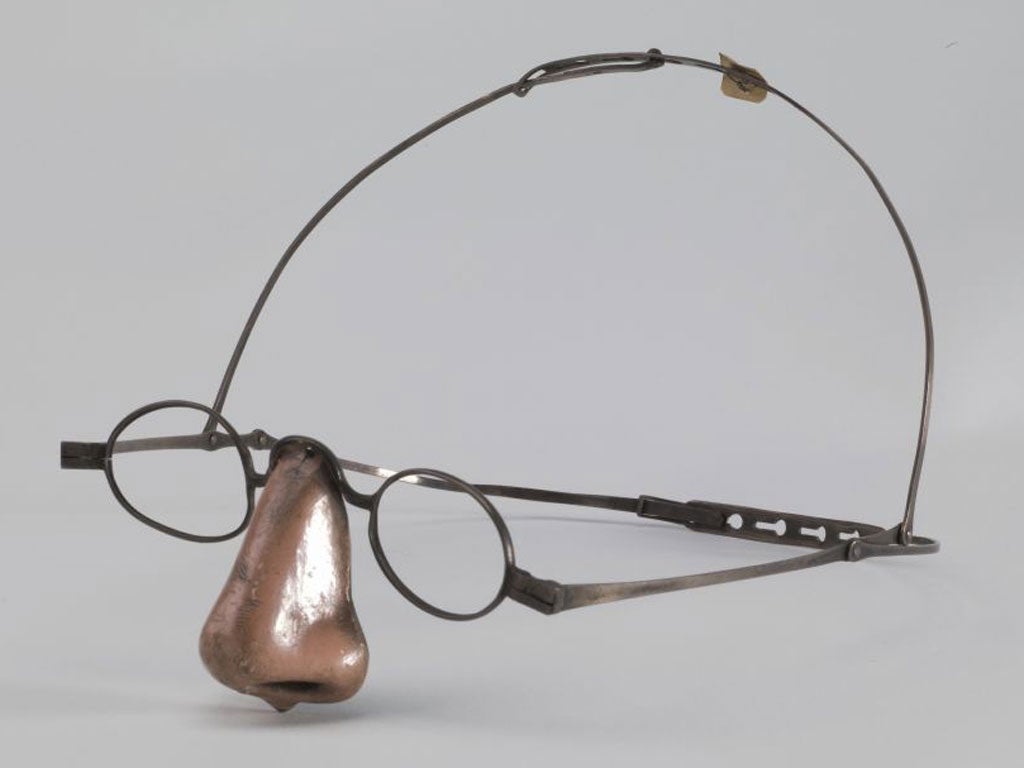Superhuman, Wellcome Collection, London
This vain and godless world is a warning to us all

A tiny bronze statue of Icarus is the first item in this show. It should also be the last. For the story of the boy who flew too close to the Sun is a handy reminder that, however far we advance, we should never forget our capacity to cock up.
Superhuman is an exploration of human enhancement over the ages. It starts with a prosthetic toe dating from 600BC, and ends with a timeline of the future, predicting that, in 2050, we will be exploiting Mars's resources. There's plenty of fun stuff in between: this is a romp through the ingenious ways humans have improved our lot. Exhibits range from the titillating, like the 18th-century ivory dildo, with its own pump-action system for simulating ejaculation; to the life-changing, like the 19th-century silver prosthetic nose worn like glasses, as owned by a woman who lost her own to syphilis.
These kooky little treasures are fascinating, and form a gentle introduction to darker themes ahead. They make us marvel at science's ability to overcome inconvenience. It's when we get on to the effects of thalidomide on unborn babies that we are reminded of the repercussions of tampering with nature. A News International photo, titled Philippa Verney Drinking Coffee with her Foot, is a moving reminder of this shameful episode in pharmaceutical history. It's also a timely reminder of News International's past greatness.
With further neat timing, there are exhibits relating to the Olympics and the Tour de France, which question the ethics of doping in sport. A reel of news footage shows the last moments of Tom Simpson, who until Bradley Wiggins was Britain's most successful Tour de France cyclist. He collapsed and died on Mont Ventoux in the 13th stage of the 1967 race. Initial reports blamed exhaustion, but he was later found to have taken a mixture of brandy and amphetamines.
So the question is: how far is too far? To what limits can we push ourselves, and should we? A screen of talking heads raises yet more questions about the morality of life-lengthening. Oxford professor of neuroethics Bennett Foddy reasons in favour of anti-ageing medicine by saying: "Really it's the project of medicine to extend human life, to enhance life and human youth and to defeat age and death." Hold on, that doesn't chime with the Hippocratic oath: "above all, I must not play at God".
God doesn't get a mention anywhere in this exhibition. The assumption appears to be that anyone still worrying their heads with religion has no place in the Wellcome Collection. Maybe. But to ignore the thinking of thousands of years suggests a disturbing arrogance. Spend too much time in here, watching Donald Rodney's self-propelling wheelchair, or staring at The Immortal, an installation of five inter-connecting life-support machines, and it feels like being trapped in Frankenstein's lab.
Superhuman raises complex ethical questions about how science can improve our lives, and couldn't come at a more apposite moment, as Oscar Pistorius becomes the first double amputee to compete in an Olympic Games. But the answers that this exhibition offers are unsettling. To anyone remotely sceptical of the scientist's assumption that science can solve any problem, the confident predictions of a bionic future seem wrong. "It is inevitable that we will either be enhanced or die out," says one boffin on a screen. No, it isn't. Just ask Icarus.
To 16 October (020-7611 2222)
Subscribe to Independent Premium to bookmark this article
Want to bookmark your favourite articles and stories to read or reference later? Start your Independent Premium subscription today.

Join our commenting forum
Join thought-provoking conversations, follow other Independent readers and see their replies